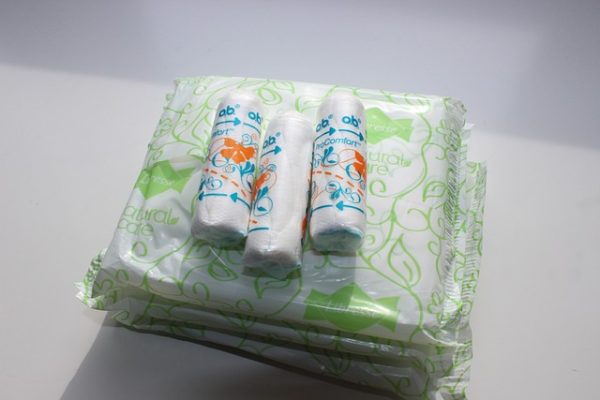Traces of Lead and Arsenic Have Been Found in Tampons
 The average person who menstruates spends around five years of their lifespan using around 11,000 menstrual products, including tampons. A new study led by Jenni A. Shearston a postdoctoral scholar from UC Berkeley found that tampons from several brands that millions use can be contaminated with the toxic metals lead, cadmium and arsenic. This finding is alarming because the skin of the vagina has the ability to absorb chemicals better than skin in other locations on the body. Up to 80% of people who menstruate use tampons for hours on end. If you believe you were harmed by contaminated tampons, you should call the seasoned Chicago-based product liability lawyers of Moll Law Group.
The average person who menstruates spends around five years of their lifespan using around 11,000 menstrual products, including tampons. A new study led by Jenni A. Shearston a postdoctoral scholar from UC Berkeley found that tampons from several brands that millions use can be contaminated with the toxic metals lead, cadmium and arsenic. This finding is alarming because the skin of the vagina has the ability to absorb chemicals better than skin in other locations on the body. Up to 80% of people who menstruate use tampons for hours on end. If you believe you were harmed by contaminated tampons, you should call the seasoned Chicago-based product liability lawyers of Moll Law Group.
Discuss a Claim With Moll Law Group
Shearston believes that theirs is the first paper to look at how much metal is in tampons. Metal can increase risks of cancer, diabetes, infertility, and dementia. The brain, kidneys, liver, and related systems can be severely damaged. Plus, fetal development can be harmed. What is disturbing in this case is that there were concentrations of lead, arsenic, and all other metals tested for in the tampons.
Thirty tampons from 14 brands were tested for the presence and level of 16 metals. These metals were zinc, vanadium, strontium, selenium, lead, nickel, mercury, manganese, iron, copper, chromium, cobalt, cadmium, calcium, barium, and arsenic. The amounts of metals found were different based on whether products were purchased in the United States or Europe and the U.K, and based on whether the tampon was organic or nonorganic. There was no category of tampon—including organic tampons—that consistently showed lower concentrations of most metals. The presence of these metals can place women at higher risk for exposure because they use menstrual products.
Researchers believe metals could get into tampons through absorption from the environment, whether soil, air, water, or toxins. There may be metal in tampons due to a factory’s manufacturing decisions like adding whitener, pigment, or antibacterial agents. However, it’s unknown whether these metals cause harm to the health of consumers. Other studies will need to be conducted to figure out how much of the metals at issue can leave the tampons and get absorbed in the vagina. Additional testing for other chemicals may need to be performed to determine levels of exposure.
Heavy metals and toxins are connected to chronic diseases, developmental problems, and reproductive harm. If you were injured by a tampon or other product contaminated by heavy metals, you may be able to recover compensation through a product liability lawsuit. These lawsuits can be pursued when a product is defective in terms of its marketing, manufacturing, or design. In many product liability cases, it is crucial to retain experts who can determine what defects exist in the product and whether these caused injuries.
Please call the seasoned Chicago-based trial lawyers of Moll Law Group for a consultation if you believe you have a product liability claim. We represent those injured by defective products around the country. Billions have been recovered in cases with which we’ve been involved. Please complete our online form or call us at 312.462.1700.
 Illinois Injury and Mass Tort Lawyer Blog
Illinois Injury and Mass Tort Lawyer Blog

